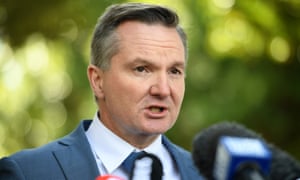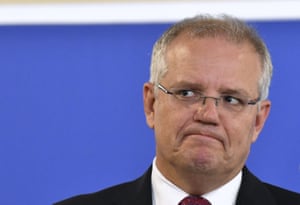Opinion
Climate change
Nicky Ison
We still have time to avert the worst impacts of climate change, but heatwaves are now an inevitable part of Australia’s future
Heatwaves and blackouts have been the talk of the town as temperatures climbed over 40C in all states except Tasmania, and once again the commentariat have gone into a renewable-generated bluster. Chris Uhlmann and Alan Moran blamed the high prices on wind power, Pauline Hanson called for people to use more power and Judith Sloan called demand management a bribe.
There were three notable things that happened with our energy system during what will become the new normal of extreme heat.
There were three notable things that happened with our energy system during what will become the new normal of extreme heat.
1. It was hot
At the end of last week it was hot. Like, record-breaking, fry an egg on the pavement hot. Many parts of South Australian and Victoria faced their hottest days on record.As Australians tried their best to stay cool, almost everyone who had an air conditioner switched it on and we experienced a “peak demand” event. This is a period where our electricity system is stretched to its limit and wholesale electricity prices reach their peak.
As our planet warms we can expect more days like Thursday and Friday. While we still have time to avert the worst impacts of climate change, some warming is now locked in and that means the heatwaves we have experienced more than once already this summer are now an inevitable part of Australia’s future.
So what should we do about it?
Australia needs to get serious about reducing climate pollution, which continues to rise and do our contribution to stop runaway global warming.
We can improve our houses and building so they better manage the heat. Australian houses are sometimes called leaky tents; they let in the heat in summer and the cold in winter.
It doesn’t have to be this way. Insulation, double-glazing, draft proofing, better building standards, all these things will keep your house passively cool and reduce (though not eliminate) the amount of air conditioning you need. It’s not rocket science, but currently we aren’t doing any of this.
We can also upgrade our air conditioners to be more energy efficient. According to energy analyst Tristan Edis, new air conditioners use half the electricity of the majority of air conditioners that were installed in the early 2000s. On hot days, this would make a significant difference.
2. Coal and gas plants failed
Our coal and gas plants are ageing. As they age, they breakdown and need maintenance more often. Last week was a case in point. In Victoria, Yallourn power station took one of its units offline for maintenance and another had to be taken offline unexpectedly early Friday morning. Also in Victoria, Loy Yang A had a boiler tube leak just before the heatwave hit and was out for the duration. In New South Wales, Liddell and the Tallawarra gas plants were both offline for many days due to unplanned faults.These six coal and gas units totalling 2,225MWs of capacity were not available for at least some of the period of Australia’s most intensive heatwave on record.
This is at best a sign that our coal plants are getting old and can’t be relied on at peak times and at worst it was price-gouging behaviour by some of Australia’s largest energy companies.
We need to get serious about demand response. Demand response is when households and industry are paid not to use electricity for some nonessential operations for a period of time. While this isn’t a great idea all year round, for a few hours on a few days a year it’s the cheapest and most effective way of maintaining an electricity system. This is standard practice in the US and Europe where they even have markets for demand response. This is urgently needed here, but was resisted by rule-maker, the Australian Electricity Market Commission (AEMC), until late last year.
We also need to continue to build new electricity supply in the form of solar, wind, battery storage, pumped hydro and similar.
3. There were blackouts
At the end of last week we experienced two types of blackouts. First there were localised blackouts affecting about 25,000 households in South Australia on Thursday night. These were due to fuses blowing in our distribution infrastructure. These fuses are designed to blow when infrastructure gets too hot so that it isn’t damaged. This was the electricity system working as it should. It isn’t surprising given the record temperatures.The second type of blackout experienced was “load shedding”. This is where the market operator temporarily cuts off some energy users from the system to ensure “system integrity” and to ensure it doesn’t fail catastrophically. In Victoria on Friday afternoon, 160,000 customers were blacked-out over a two-to-three-hour period.
Load shedding is the action of last resort and Aemo did everything it could before taking this path. It fired up emergency reserves, asked big energy users to power down and appealed to us to lower our electricity use.
Australia’s electricity system is incredibly reliable, typically exceeding our reliability standard of 99.998%. That basically means that the electricity supply needed is available 99.998% of the time.
Almost all blackouts in Australia (96.6% according to the AEMC) are because of faults in the poles and wires. What happened on Friday was very rare – only 0.2% of blackouts occur because there isn’t enough operational generation in the system.
However, particularly for people suffering health conditions as well as older and younger people, power outages are dangerous and they aren’t good for business either.
So what should we do about it?
We need more on-demand capacity – there is need for storage (batteries and pumped hydro) and dispatchable solutions (concentrating solar thermal and demand response), that can turn on and ramp up quickly.
Renewables (hydro, solar and wind) account for about 20% of generation in the National Electricity Market, higher in South Australia. Over the two-day period in question, renewables averaged higher than 20% generation and on Friday afternoon, when power was needed most, a combination of hydro, wind and solar provided over one-third of Victoria and South Australia’s power.
We need to recognise climate change is causing more heatwaves which brings increased risk of localised blackouts and even load shedding. We need to start adapting to this new normal. One strategy to do this would be to create community cool zones where people can go to stay cool in extreme heat. These cool zones should have backup power that means they will stay cool even during blackouts.
Finally, we also need to have strategies for giving people, particularly vulnerable people, more notice of potential blackouts. If we get serious about demand management there will be better systems in place to provide this notice to people and even incentives and support for folks to go to the movies or a community cool zone.
While we can never have an electricity system that is 100% reliable, there are straightforward policy and engineering solutions that can increase our electricity system’s resilience to climate change in the future.
- Nicky Ison is the founding director of the Community Power Agency and research associate at the Institute for Sustainable Futures at the University of Technology Sydney.












